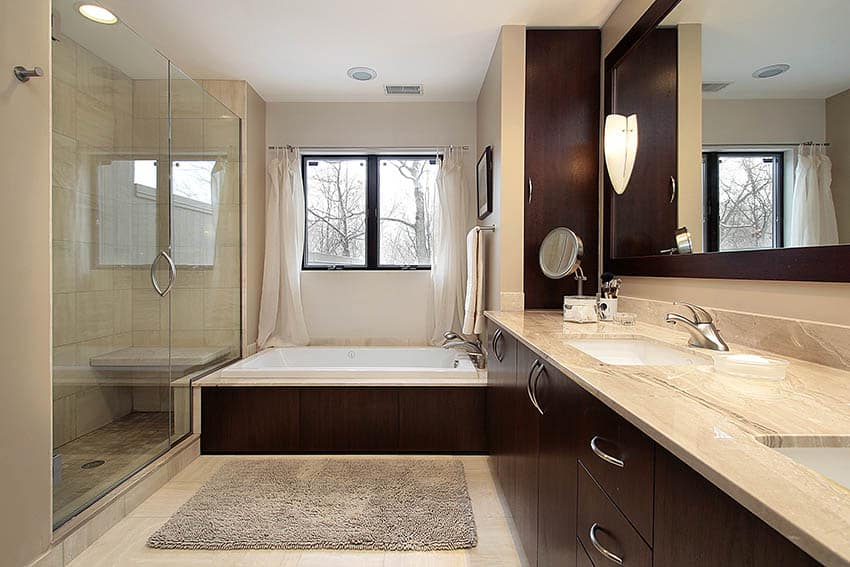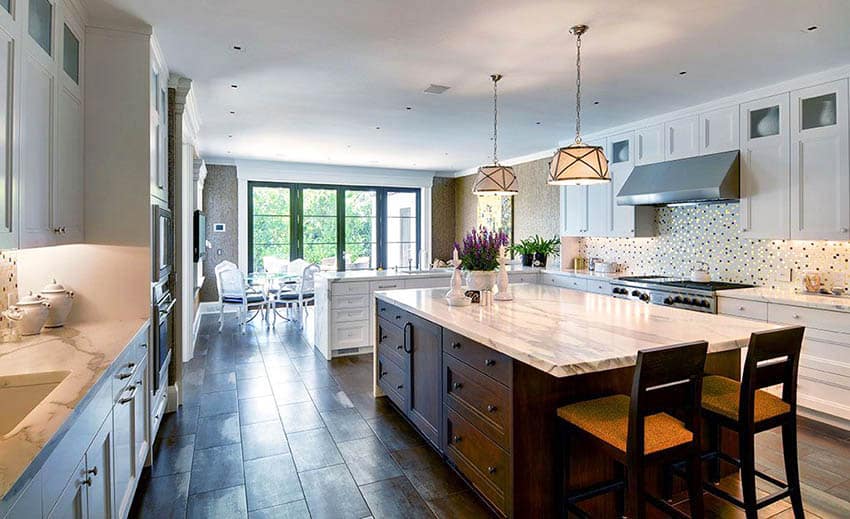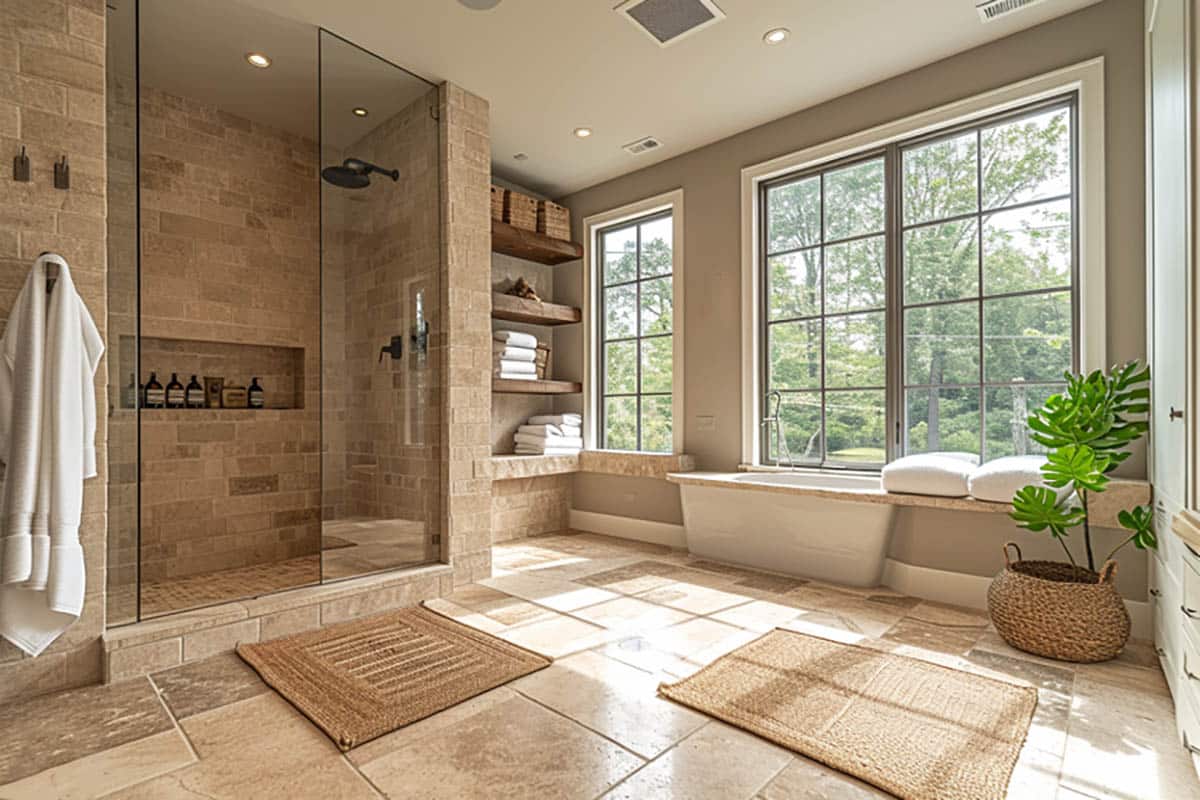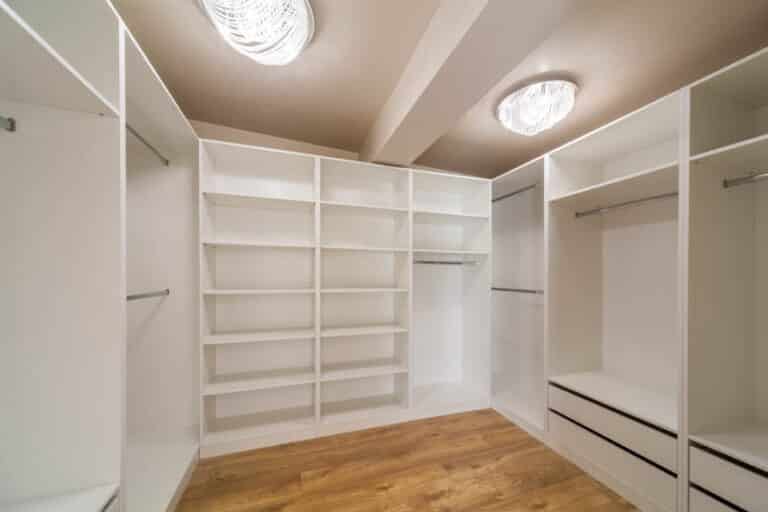7 Differences Between Marble and Travertine: Interior Designer Comparison

Though often confused for one another, there are plenty of differences between marble and travertine. Travertine is often thought of as a type of marble, but with its makeup and unique qualities, it is its own separate material. When it comes to decorative building materials, marble and travertine are two heavyweights that share the limelight. Though they look alike to the untrained eye, these geological glamour girls have distinctly different origins and compositions behind those calcite crystals.
Picture marble as limestone that’s been through the wringer – we’re talking incredible heat and pressure that whipped it into the gorgeous metamorphic rock we covet. Travertine, on the other hand, forms au naturel from mineral spring water, accumulating layer by creamy layer. Those hot spring conditions give travertine her signature porous texture and occasional iron-rich imperfections that marble lacks.
How they’re made: Travertine is naturally formed and compressed over time, creating holes and channels where gas or water got stuck during formation. Travertine is extremely soft, making it susceptible to scratching and staining. Marble is formed by metamorphosis, recrystallizing to become a harder surface.
How they’re used: Travertine is typically used for bathroom flooring, kitchens, outdoor spaces, and decorative pieces. Often, they are used outdoors due to high friction surfaces preventing slipping near pools or in the rain. They can be used for kitchen or bathroom countertops but may take special care.
When it comes to countertops, I encourage clients to enhance the elegance by replacing a countertop with travertine, limestone or other natural stones that can help achieve an upscale look without completely remodeling the entire bath. – Sharon Hanby-Robie, Decorating Without Fear
Marble is used for bathroom walls, floors, and counters. Marble will rarely (if ever) be placed in an outdoor setting; it will scratch from the natural elements and become a slip hazard.
How much they cost: Travertine will cost less than natural marble but a little more than cultured marble. But the cost will greatly vary based on location and quality. Both are heavy, so they will require large shipping and handling fees. Marble will need a very good starting seal, adding to the price tag.
Travertine tiles start at around $2 per square foot on the low end, ranging up to $15 per square foot for rare, premium varieties. Marble is generally more expensive, with basic marble tile costing $5-10 per square foot, while rare or exotic types can be $20-50+ per square foot.
The installation costs tell a similar story. Travertine installation ranges from $5-15 per square foot depending on the project scope, region, and contractor experience. Marble installation starts at $10 per square foot and goes up to $20 per square foot since it is heavier and more fragile to work with, requiring extra precision.
How strong they are: While marble will be the harder of the two, it is not harder to break. Care must be taken with marble, making the material take longer to install, and cost more.
Travertine will be softer but easier to process, meaning it will have more options, including honed, polished, filled, tumbled, pillowed, and chiseled edge.

How durable are they: Both travertine and marble have high durability points. As mentioned earlier, marble is a harder stone with higher durability.
Marble will always be a sealed product; this gives it better water and stain-resistant durability.
Travertine, however, can go either way, with or without sealing the material, which will greatly affect its durability.

Appearance: Marble is distinctly veiny in its color patterns. Marble is sometimes one solid color, but frequently it will be streaked with a different color.
Commonly marble will be white with gray or black veining, but it can be colored from pink, blue, and green to black and gray. Interior designers choose to use marble much more frequently in their designs than travertine counters.
Travertine natural stone will give off a more textured natural feel for an aesthetically pleasing appearance. The colors will range from warmer whites and creams to beige, reds, browns and even golds.
There will be variations in patterns and colors to each of the tiles to keep the unique natural feel.
How to maintain them: While both materials are vulnerable to acids, something will need to be used to clean them. This means you must take extra care with spills such as wine, lemon juice, and wine.
Soap and water will do, and sealing travertine countertops frequently will help keep the stones in tip-top shape. Spills should be wiped immediately to avoid staining and kept out of direct sunlight.






